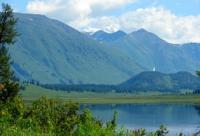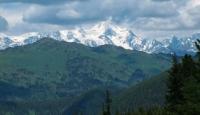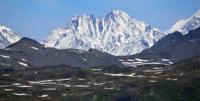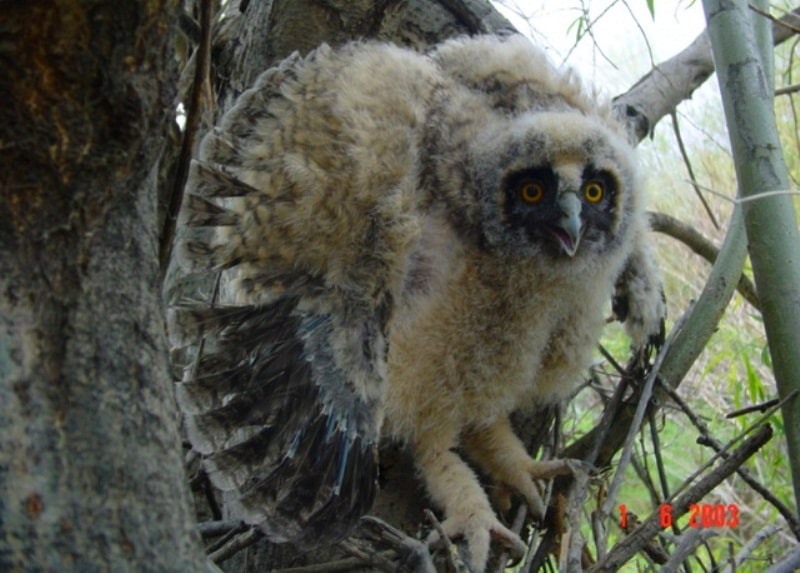You are here
Katunsky ridge.



Tours in Katun ridge of Kazakhstan.
“August must be shed slowly, like pear liquor.
Pour into a small glass, drink a drop, and look through the glass at the sun.
August nights should be diluted with candle lights, milk poured into a cup for a brownie, purring a cat and the chatter of grasshoppers.
August days should be laid between the pages of books, like bookmarks, in order to then shake out their heat in the dank November of taking this book from the shelf.
And I conjure you, well, do not shout at all corners, "Oh, here is August, here is autumn."
Well, where are you in a hurry?
Stop the clock.
Drink a Drop"
Ray Douglas Bradbury.
Sights of Katun ridge in Kazakhstan.
The Katunsky ridge (Katunskre snow mountains) within Kazakhstan is located in the northeastern part of the Katon-Karagai district of the East Kazakhstan region on the border with the Russian Federation. The southern slopes of the Katunskiy ridge stretch across the territory of Kazakhstan for 14 kilometers from west to east.
The most significant center of glaciation is the Katun ridge, in which almost half of the glaciers known in Altai are concentrated. Their total area exceeds 230 square kilometers. There is also the main center of glaciation - Mount Belukha, from the slopes of which six large valley glaciers slide down. Large glaciers are also located in the South Chuya squirrels, the Bish-Iirdu mountain group and in the eastern part of the South Altai.
The snow line within Altai lies relatively high. Even in the most humid western regions, it does not fall below 2300 - 2400 meters above sea level, in Central Altai, in the Katu region of some and Chuysky proteins, it rises up to 2500 - 3000 meters above sea level on the northern slopes and up to 2600 - 3300 meters above the level the sea in the south.
In the highest mountain ranges of the Southern, Central and Eastern Altai, with their relatively humid and cold climate, glaciers are widespread. Until very recently, Altai was considered the only area of significant modern mountain glaciation in Siberia - about 800 glaciers are known here, and the total area occupied by them exceeds 600 square kilometers (MV Tronov, 1949, 1952).
Some of the glaciers are more than 8-10 kilometers long, and the area of the most significant of them - Bolshoy Taldurinsky and Alakhinsky - reaches 18 - 20 square kilometers. Modern glaciers in Altai are in the process of retreating and are decreasing in size every year.
So, for example, over the past 50 years, the lower part of the Katunskiy glacier has melted, and it has become shorter by almost 700 meters, the Akkemskiy glacier has shortened by more than 450 meters, the Bolshoi Berelskiy glacier retreats annually by an average of 22 meters, and the Sofiyskiy glacier - even by 27 meters per year.
Very characteristic orographic elements of Altai are peculiar wide intermontane basins located at different heights. They are bordered by steep slopes of ridges rising above them and filled with loose sediments brought from the neighboring mountains by rivers and ancient glaciers.
Usually, a river flows along the bottom of such hollows, often having the appearance of a flat stream with a meandering channel and a relatively calm current. The formation of these basins is associated with tectonic processes of the Tertiary and Quaternary times.
They represent areas that have relatively subsided or lagged behind in their uplift from more intensively rising neighboring ridges.
Geographic coordinates of the Katunsky ridge: N49 ° 44'40.47 "E86 ° 10'02.41"

Authority:
"Altai of Kazakhstan", compiled by A.L. Kobozev, Alma-Ata, Kaynar, 1986.
Photos:
Alexander Petrov.







